|
During the "War
of the Fifth Coalition" in 1809, Frankfurt was ordered
to aid the french troops to fight against Britain and
Austria. The embarkation order to set out for
Spain was issued on August 10. 1808. Initially 868 men,
called the „1. Bataillon des Regiments von Zweyer“,
crossed the Bidassoa river into Spain on October 19,
1808, to fight for 6 years under french command. They
were joined to the division Leval as part of the 4th
french corps.
The "Honorary medal for the primate's, later Grand
Ducal Frankfurt troops who fought in Spain" was
established by the Prince Primate of Frankfurt Carl
Theodor in 1809.
Interesting for us medal collectors is the fact that
the final version of the first type of this medal took 4
attempts of die making. With the initial three reverse
dies cracking, while attempting to coin the ordered
silver medals, the Prince Primate had to be informed
about the unsuccessful attempts while a silver example
was sent for his review.
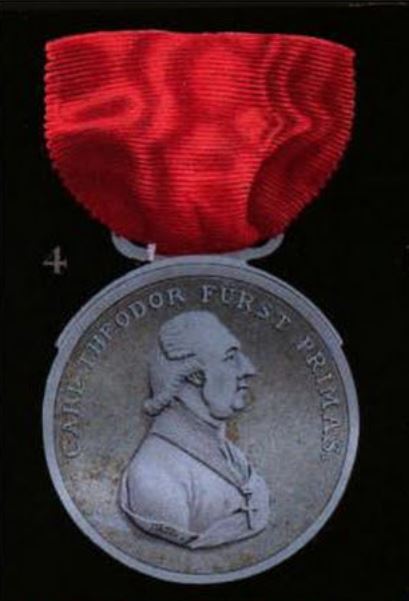
Fig 1: Honor Medal 1st type, avers, Fig 4 from Tafel
II of Archiv für Frankfurts Geschichte und Kunst,
Volume 3, Issue 3, 1891
Liking the overall design, he ordered to try for a
forth time. Only this last one was used to coin seven
gold and 19 silver examples showing the bust of Prince
Primate Carl Theodor on the avers including the
abbreviation "L'All" for the die maker Conrad Cristian
L'Allemand (*1752 in Hanau, +1830 in Frankfurt) of the
medal with the inscription: "Carl Theodor Fürst Primas".
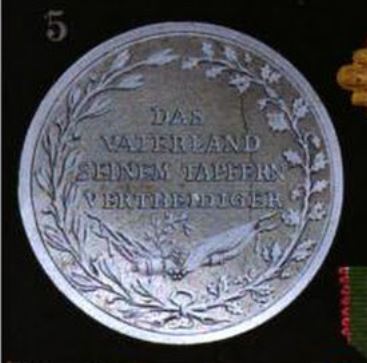
Fig 2: 1st attempt of
revers for the Honor Medal with crack to the right,
proof, Fig 5 from Tafel II of Archiv für Frankfurts
Geschichte und Kunst, Volume 3, Issue 3, 1891
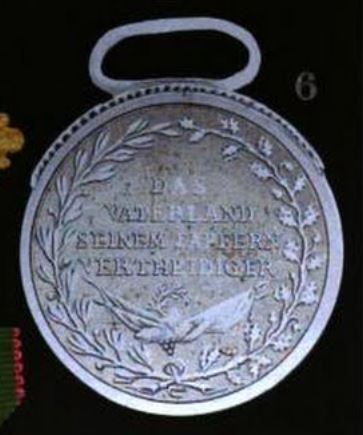
Fig 3: 2nd attempt of
reverse for honor medal, fading of the trophies in
the bottom, it was attempted to just mending the
preceding die, Fig 6 from Tafel II of Archiv für
Frankfurts Geschichte und Kunst, Volume 3, Issue 3,
1891
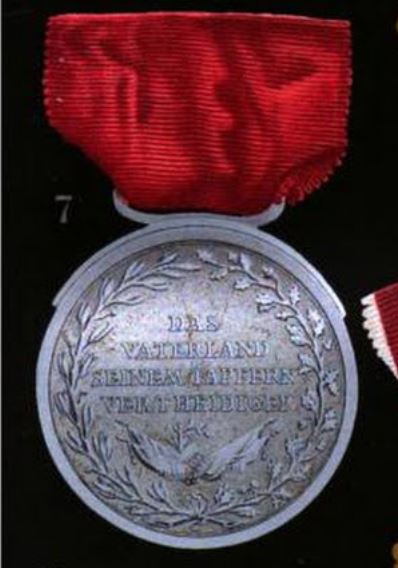
Fig 4: Final reverse of
the honor medal, Fig 7 from Tafel II of Archiv für
Frankfurts Geschichte und Kunst, Volume 3, Issue 3,
1891 Only 6 golden and 18 silver medals were sent on
October 11, 1809, accompanying Lieutenant Rosenstangel
to Spain. This leaves one silver medal from the cracked
reverse die as well as one example each of the silver
and golden medal in Frankfurt. Despite the demand for
more medals to be created throughout the continuing war
with it's correspondence between the leadership in Spain
and Frankfurt being dragged out, no more medals of this
type were coined. However, with additional brave staff
being recommended to receive honor medals after creating
the grand duchy of Frankfurt on February 16, 1810, the
medal had to be redesigned and coined a 5th and final
time showing the inscription: " Carl Grossherzog zu
Frankfurt". This final version shows only the letter "L'
" (L'Allemant) underneath the bust of the now grand
duke.
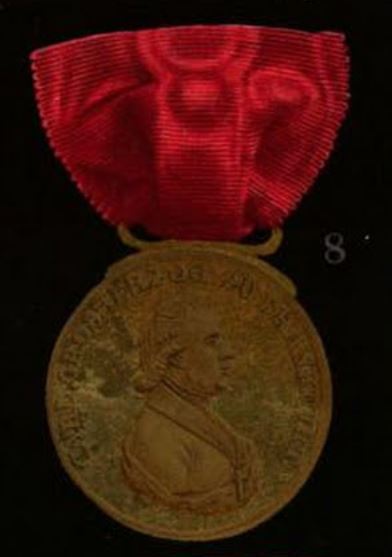 |
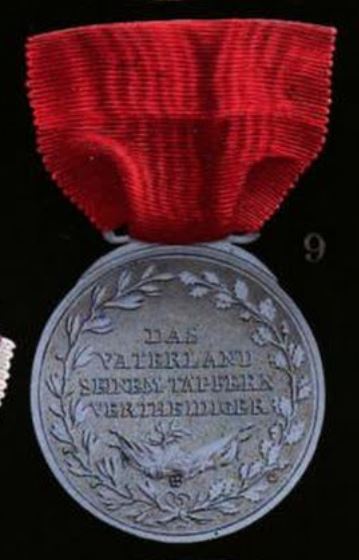 |
|
Fig 5: Avers of the last
model, Fig 8 from Archiv für Frankfurts
Geschichte und Kunst, Volume 3, Issue 3, 1891
|
Fig 6: Reverse of the
last model, Fig 9 from Archiv für Frankfurts
Geschichte und Kunst, Volume 3, Issue 3, 1891 |
Despite larger demand, only 6 golden and 13 silver
medals were produced. Of those, only 2 golden and one
silver medal were demonstrably awarded to individuals,
with the balance passed on to those who were recommended
on earlier dates when returning to Frankfurt February
1814.
 |
 |
| Fig 7: Medal of
Honor for the primate, later Grand Ducal
frankfurter troops who fought in Spain, Avers,
2nd type |
Fig 8: Medal of Honor
for the primate, later Grand Ducal frankfurter
troops who fought in Spain, reverse, 2nd type |
In addition to those medals mentioned above, the
following count was produced from the die that remained
with the town's coin collection on official approval of
the Senate of Frankfurt for collectors:
- March 1, 1861: 6 in silver
- 1880: 1 in bronze and silver
- 1887: 1 in bronze and silver
- 1888: 6 in gold
Detailed recording of those events can be found
here: Archiv
für Frankfurts Geschichte und Kunst, Volume 3, Issue 3,
1891
© A. Schulze Ising, I/18
|





